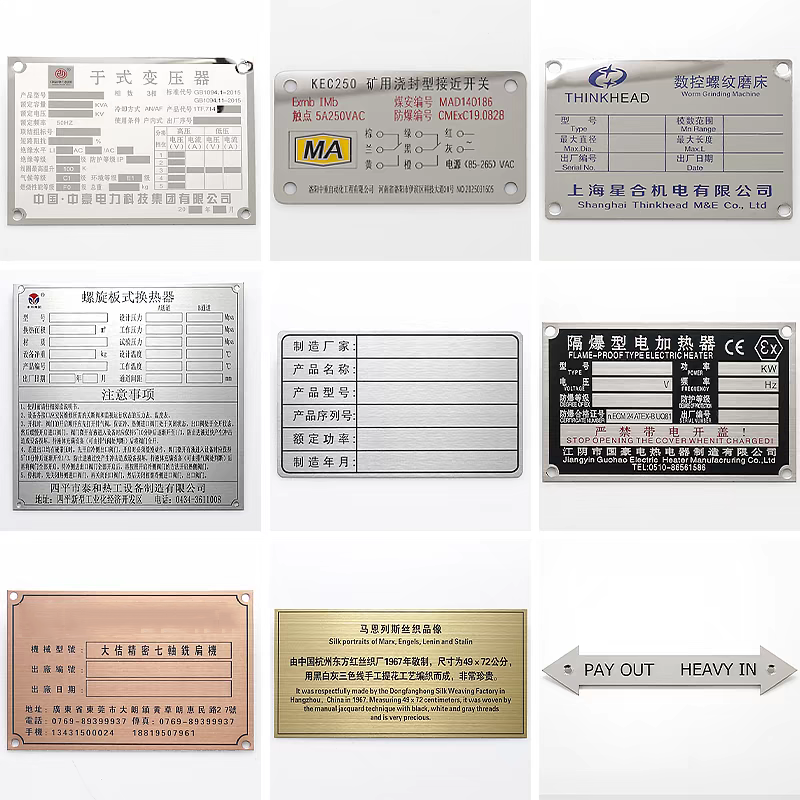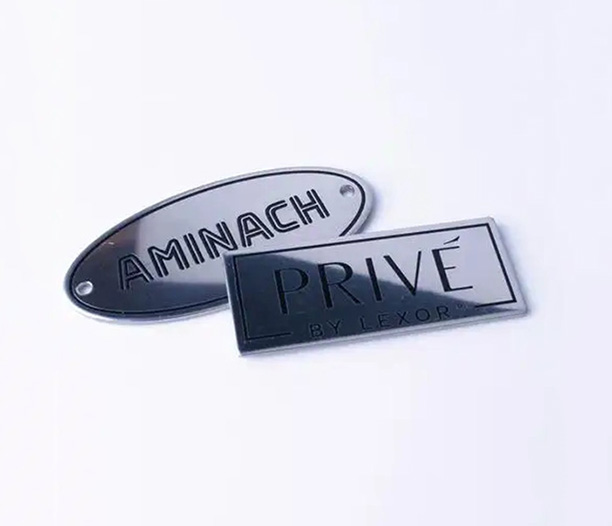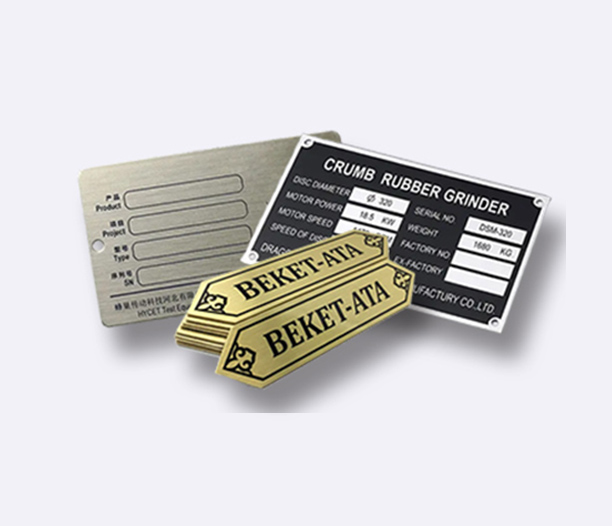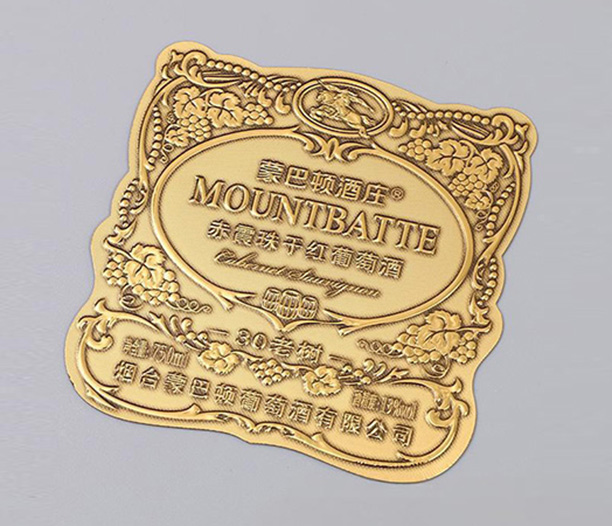In the complex world of industrial operations, from chemical plants to power generation facilities, clarity and safety are paramount. Among the countless components that keep these systems running, one small but critical element often goes unnoticed: the stainless steel valve tag. These durable identification plates are the unsung heroes of maintenance, safety, and operational efficiency. This article delves deep into the world of stainless steel valve tags, exploring their importance, applications, and the common challenges faced in their use.

What Are Stainless Steel Valve Tags and Why Are They Crucial?
At their core, stainless steel valve tags are permanent markers attached to valves within a piping system. They serve as a valve's unique identifier, carrying essential information such as a valve number, system function, operating pressure, or isolation point. Think of them as the nametag and passport for a critical piece of equipment.
The "stainless steel" part is not arbitrary. This material is chosen specifically for its ability to withstand harsh environments. Unlike paper tags or plastic labels that can fade, tear, or melt, stainless steel valve tags offer exceptional resistance to corrosion, high temperatures, chemicals, and UV exposure. This ensures that the vital information they hold remains legible and intact for the entire lifespan of the valve, even in the most demanding conditions like offshore platforms or chemical processing units. Their role in preventing operational errors, facilitating lockout/tagout (LOTO) procedures, and ensuring worker safety cannot be overstated.
The Material Advantage: Why Stainless Steel is the Top Choice
The performance and longevity of stainless steel valve tags are directly tied to their material composition. The most common grades used are 304 and 316 stainless steel.
Grade 304 Stainless Steel: This is a versatile and widely used alloy. It provides excellent resistance to most oxidizing acids and atmospheric corrosion, making it suitable for a broad range of general industrial and commercial applications where exposure to harsh chemicals is minimal.
Grade 316 Stainless Steel: For more aggressive environments, 316 stainless steel is the preferred choice. The addition of molybdenum significantly enhances its resistance to chlorides and acidic compounds. This makes stainless steel valve tags made from 316 ideal for coastal areas, marine applications, chemical plants, and pulp and paper mills where saltwater or corrosive chemicals are present.
This inherent durability means that stainless steel valve tags will not rust, warp, or become brittle over time, guaranteeing that your identification system remains a reliable source of information for years.
Common Applications Across Industries
The use of stainless steel valve tags is ubiquitous across any industry that relies on complex piping systems. Their primary function is to bring order and clarity to what could otherwise be a confusing network of valves.
Oil and Gas: In refineries and on drilling rigs, these tags are used to identify valves controlling the flow of crude oil, natural gas, and various process chemicals, which is critical for safety and emergency shutdown procedures.
Water and Wastewater Treatment: Plants use these tags to mark valves for clean water, influent, effluent, and chemical treatment lines, ensuring proper system control and maintenance.
Power Generation: Whether in nuclear, coal, or gas-fired plants, stainless steel valve tags help manage the intricate systems of steam, coolant, and fuel lines.
Chemical and Pharmaceutical Manufacturing: In these precision industries, tags are essential for identifying valves in processes involving highly reactive or sensitive substances, preventing cross-contamination and ensuring batch integrity.
HVAC and Fire Protection Systems: They are used to label isolation valves for heating/cooling systems and crucial sprinkler control valves, which is often a legal requirement for fire safety compliance.

Design and Information Marking Techniques
A blank tag is useless. The method of imprinting information onto stainless steel valve tags is as important as the tag itself. The goal is to create a permanent, high-contrast mark that will not wear away.
Embossing: This process raises characters and numbers from the surface of the tag. It is highly durable because the information is part of the metal itself, not just a surface coating. Embossed stainless steel valve tags are extremely difficult to deface and remain readable even if painted over.
Stamping: Similar to embossing, stamping indents the information into the metal. It is a strong, permanent marking method.
Etching/Laser Marking: This technique uses a laser to burn away the surface layer of the metal, creating a precise and permanent mark. It is excellent for complex logos, barcodes, or QR codes that can be linked to a digital asset management system.
Numbering Systems: Tags are typically marked with a unique alphanumeric code. This code is then logged in a valve logbook or computerized maintenance management system (CMMS), detailing the valve's specifications, location, and maintenance history.
Installation and Maintenance Best Practices
Proper installation is key to the effectiveness of stainless steel valve tags. They are most commonly attached using a sturdy, corrosion-resistant stainless steel wire looped through the valve wheel or stem. Alternatively, for valves with a flat surface, they can be affixed with industrial-grade adhesives or even rivets.
Maintenance of the tags themselves is minimal, which is a significant benefit. However, the system they support requires ongoing attention. Regular audits should be conducted to ensure:
Every valve has a tag.
The tag number corresponds correctly with the plant's asset register.
The tag is securely attached and has not been damaged.
The information on the tag remains legible.
A failed stainless steel valve tag can lead to misidentification, which in an emergency, can have catastrophic consequences.
Common Questions and Challenges with Stainless Steel Valve Tags
Despite their robustness, users often encounter specific questions and issues regarding stainless steel valve tags.
Can these tags withstand extreme temperatures? Yes, one of the primary advantages of stainless steel is its high melting point and resistance to thermal degradation. They perform reliably in both high-heat and cryogenic applications, unlike plastic alternatives.
What happens if the tag becomes dirty or painted over? The raised or indented nature of embossed or stamped markings means that even if the tag's surface is covered, the information can often still be read by touch. For etched tags, cleaning with a wire brush or solvent can restore legibility.
Is there a risk of galvanic corrosion? When stainless steel valve tags are attached to valves made of a dissimilar metal (like carbon steel) in a corrosive, electrolyte-rich environment (e.g., salt spray), galvanic corrosion can occur. This is typically more of a concern for the valve than the tag. Using an insulating washer can mitigate this risk.
How do I choose between embossing, stamping, and etching? The choice depends on your needs. Embossing offers the highest durability for simple numbering. Stamping is a cost-effective alternative. Etching is best for complex data like barcodes and offers a very clean, professional appearance.
What is the lead time for custom tags? While standard numbered tags are often available quickly, custom-sized or complex stainless steel valve tags with specific logos or data may require a manufacturing lead time. It's crucial to plan your asset identification projects accordingly.
In conclusion, stainless steel valve tags are far more than simple metal plates. They are a fundamental component of a safe, efficient, and well-maintained industrial facility. Their durability, clarity, and permanence make them an indispensable tool for operators, engineers, and maintenance personnel. By understanding their properties, applications, and proper implementation, any organization can significantly enhance its operational integrity and safety culture. Investing in a high-quality system of stainless steel valve tags is, ultimately, an investment in peace of mind.






